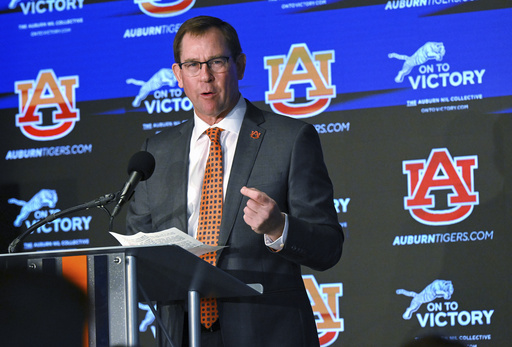
The Division I baseball season has just begun, but coaches are already looking ahead to 2026 when significant changes are expected regarding scholarship limits, roster sizes, and player financial opportunities. There are concerns that the potential removal of scholarship limits could lead to fewer prospects being recruited from high schools, particularly if the NCAA goes through with a proposal to extend athlete eligibility from four to five years. Such changes could also increase competitive imbalance across programs.
These changes hinge on the approval of a federal judge regarding a settlement related to antitrust issues involving the NCAA and major college conferences. A hearing is scheduled for April 7, with any new rules potentially taking effect on July 1, shortly after the baseball season concludes.
Under the proposed framework, baseball rosters would be capped at 34 players, with schools opting into a revenue-sharing model being allowed to avoid scholarship limits. Currently, teams can field 40 players during the season and are limited to a maximum of 11.7 scholarships for as many as 32 players.
Nebraska’s head coach, Will Bolt, noted that most teams are likely to continue offering partial scholarships rather than fully funding 34-player rosters. The anticipated changes may not disrupt the existing power dynamics in college baseball. Auburn’s athletic director, John Cohen, expressed skepticism, highlighting that approximately half of Division I programs currently don’t utilize the full 11.7 scholarship allotment. Additionally, financial constraints will likely hinder many programs from significantly increasing scholarships without additional fundraising.
The upcoming settlement would allow athletic departments to distribute up to $20.5 million in revenue among athletes across various sports starting next academic year, although football and men’s basketball players are expected to receive a disproportionate share. For baseball players, the financial benefits might be minimal, especially for those not enrolled in the highest-profile programs.
At present, most baseball players hold partial scholarships and seek ways to monetize their names, images, and likenesses (NIL). A report indicated that the top 25 earning baseball players could make just under $48,000 annually from NIL deals. However, Cohen questioned the accuracy of such figures, emphasizing the difficulty in obtaining reliable data on NIL earnings.
Clemson’s head coach, Erik Bakich, questioned whether the reported earnings were inflated, emphasizing that NIL money generally serves more as a way to cover living expenses than to reward players financially. He applauded efforts aimed at reducing the financial burdens on student-athletes and their families.
Coaches are alert to how these roster reductions could negatively impact high school talent, especially at the top level of Division I. Bolt remarked on the difficult discussions about future placements with his players, explaining that many rosters previously held about 45 to 50 players in the fall, while the new roster limit is advised to be 38 before decreasing to 34 by December 1.
Bolt also mentioned that it typically takes fresh players three semesters to acclimate to Division I baseball. With roster sizes shrinking, the chance for young athletes to secure a spot may dwindle. He suggested that unless high school recruits are standout prospects or foregoing lucrative draft offers, junior college might become an appealing path.
Moreover, the MLB amateur draft’s reduction from 40 rounds to 20 has led to older players remaining in college longer, often utilizing the transfer portal to meet immediate team needs instead of relying on younger talents. An additional proposal under discussion to extend eligibility could further enhance this trend.
Concerns also linger over how junior college attendance will be counted regarding NCAA eligibility. Oregon State’s coach Mitch Canham noted that the limited roster sizes would complicate the development of promising young players who aren’t immediately ready for starting roles.
With a maximum of 34 players on a roster, colleges may be compelled to choose more experienced transfers over recruits fresh from high school, raising concerns about the future of young talent development in the sport.

